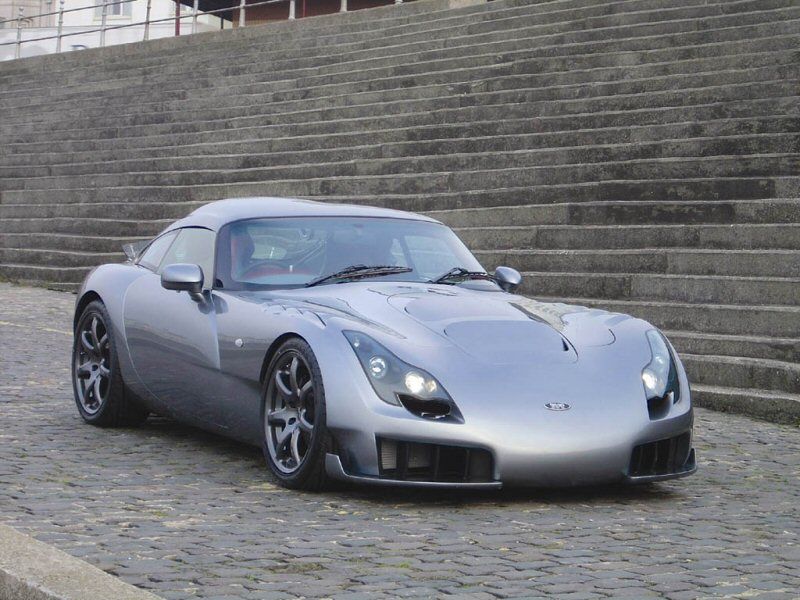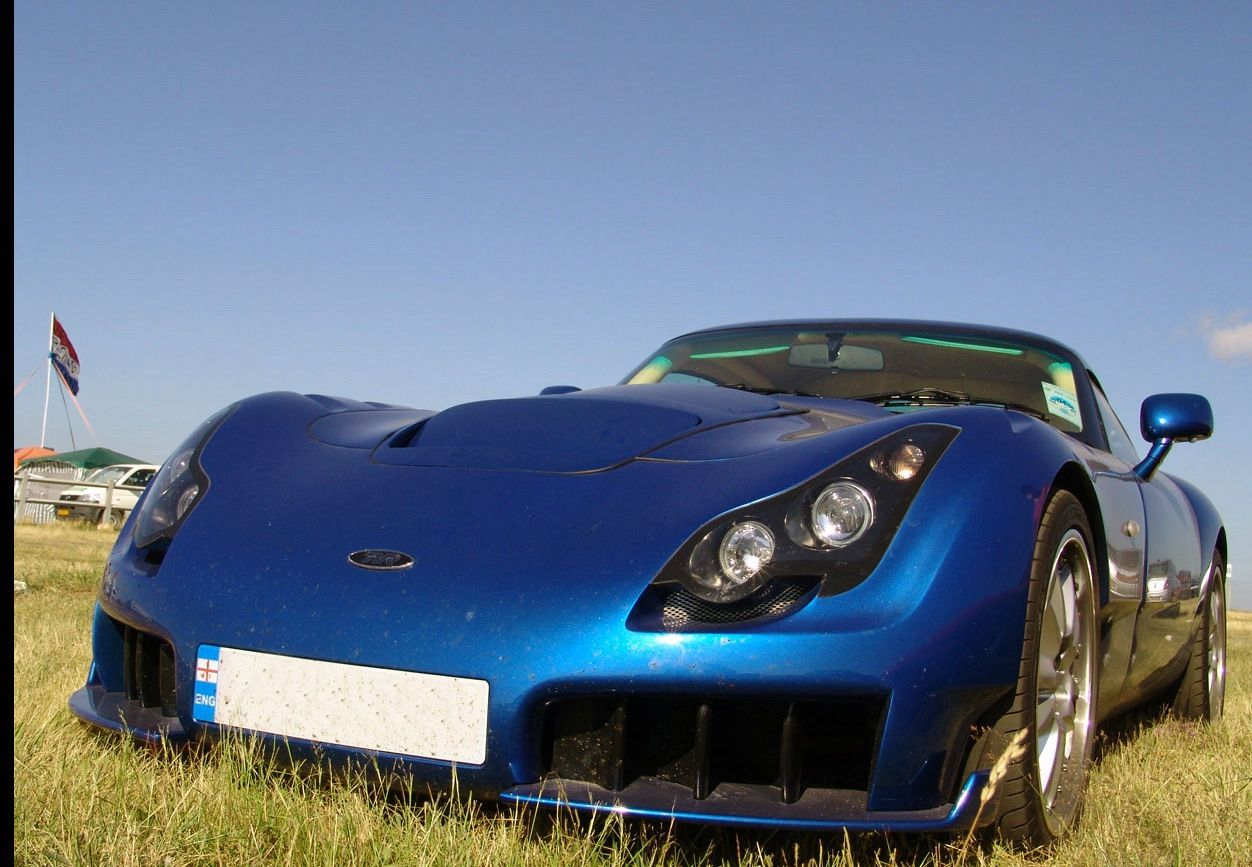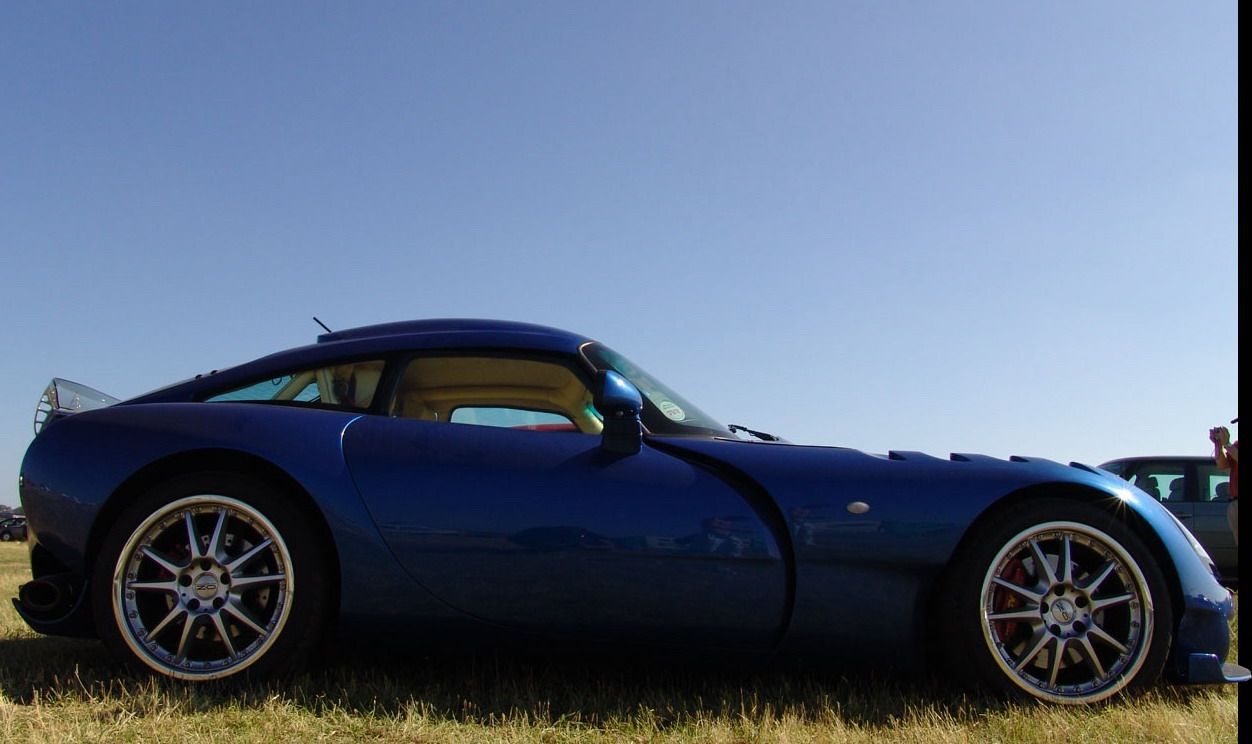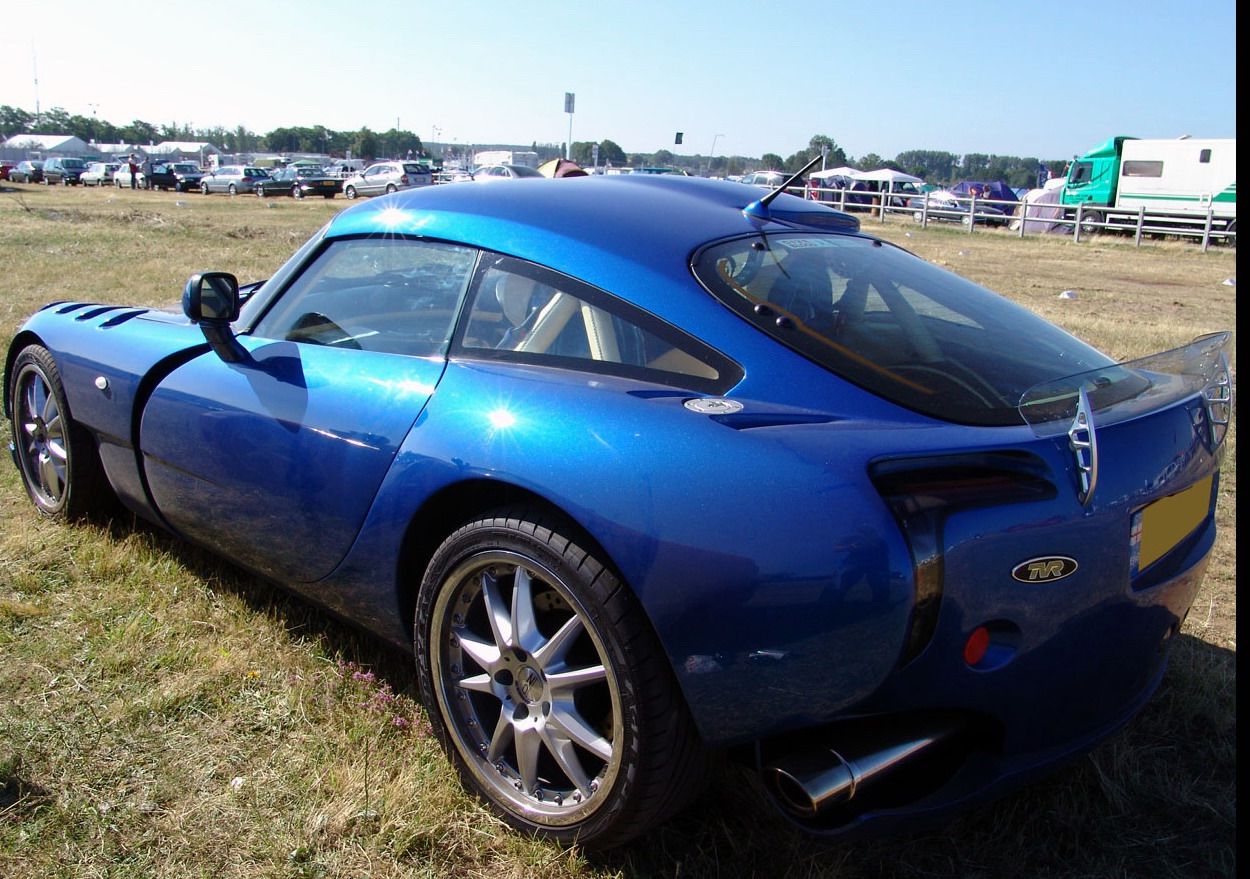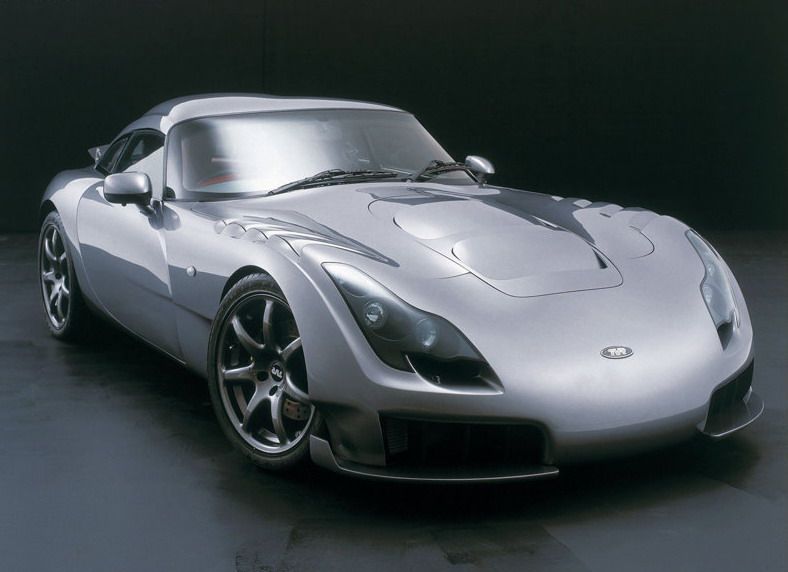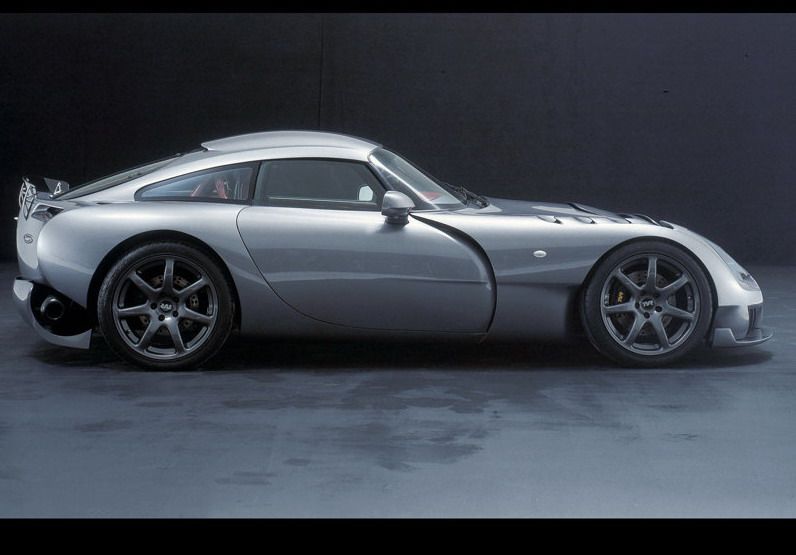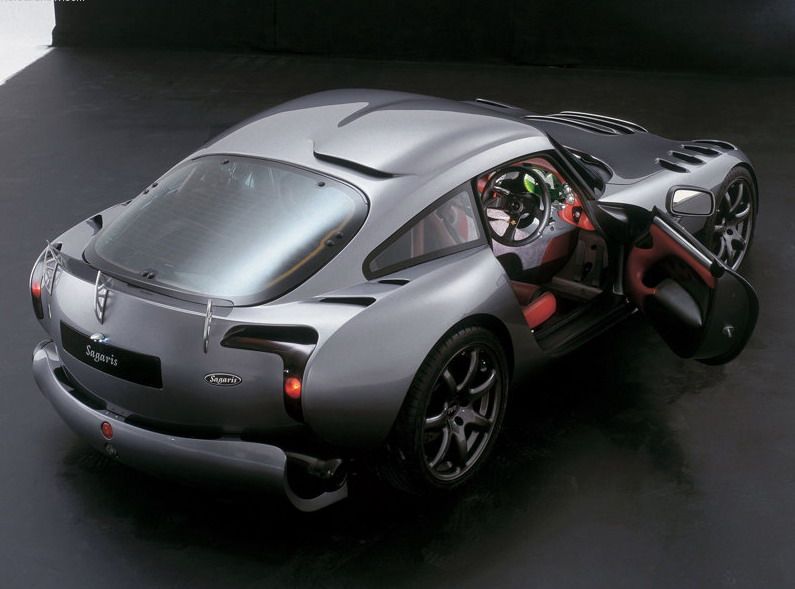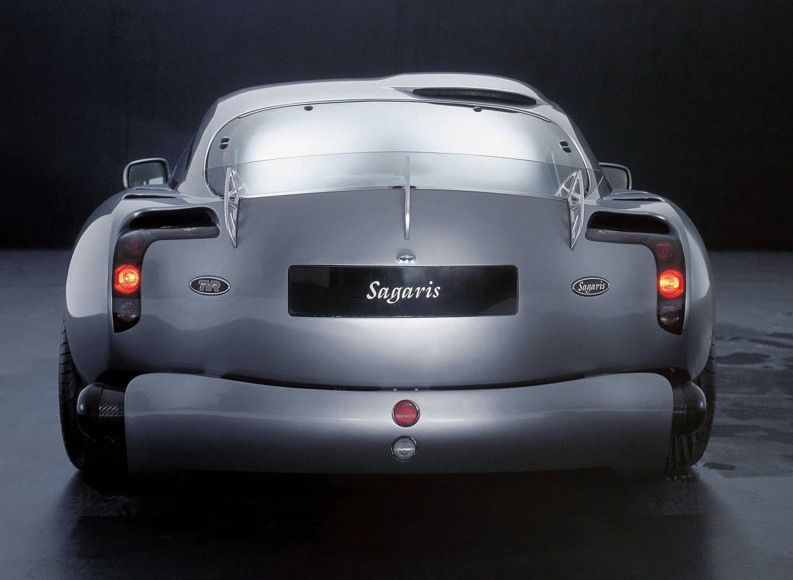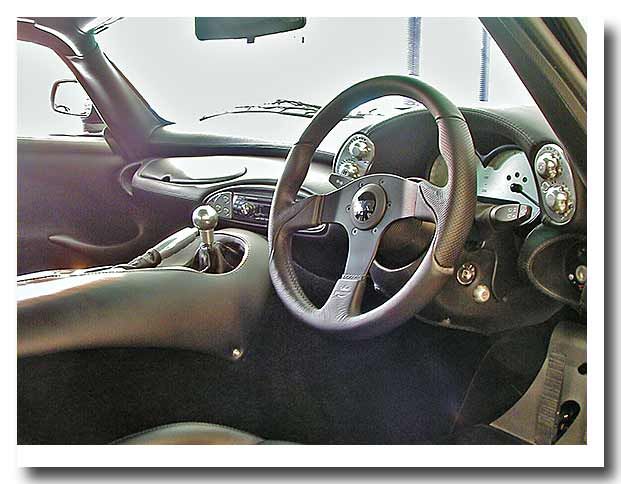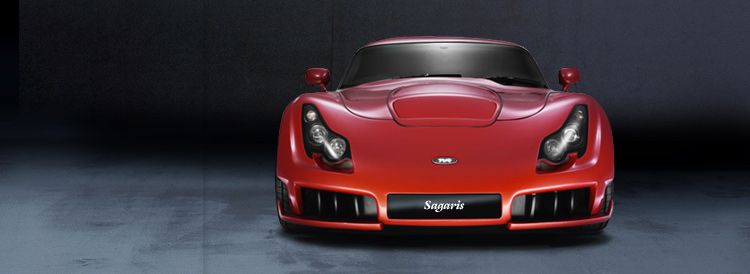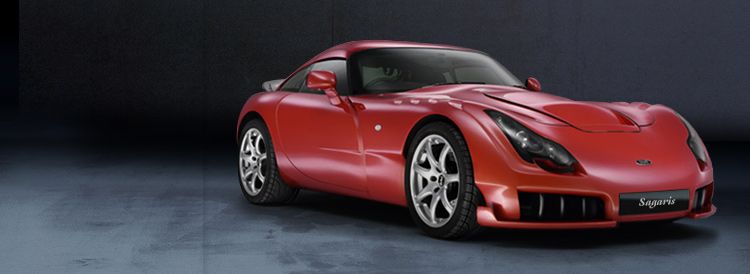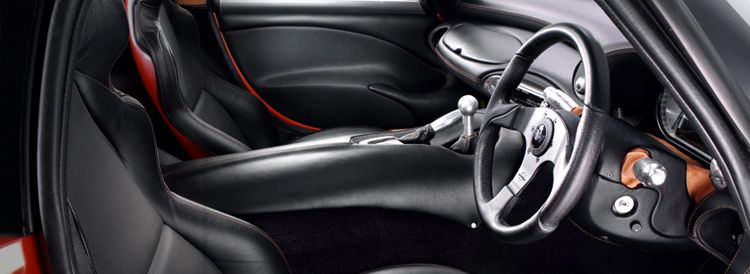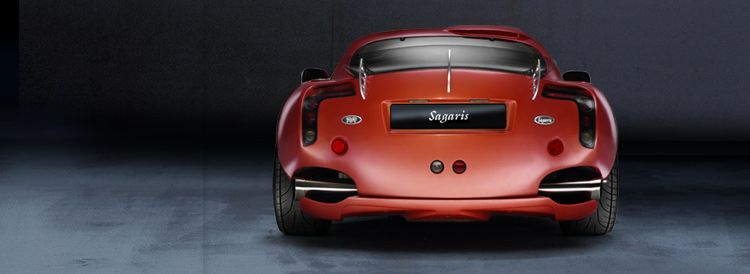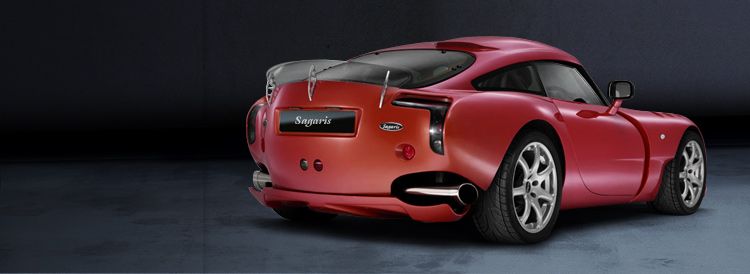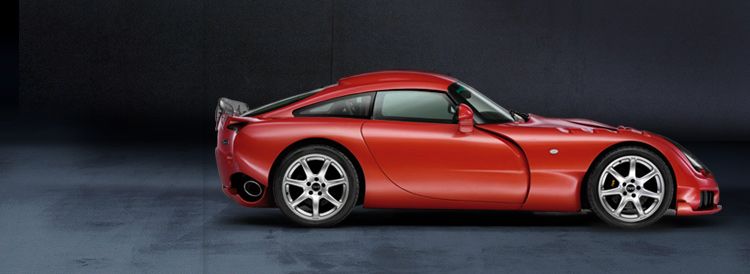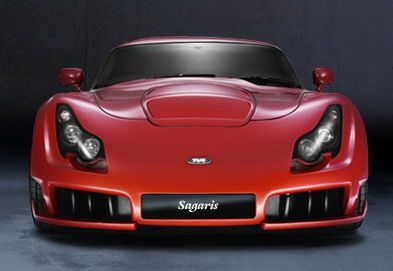2003 TVR Sagaris
- Make: Array
- Model: 2003 TVR Sagaris
- Horsepower: 380 @ 7,000
- Torque: 349 @ 5,000
- [do not use] Vehicle Model: Array
The current range of TVR models is a focused and well-balanced stable of some of the world's most rousing performance cars for the road. And in recent years, the soulfulness of the marque has been augmented further by an even greater consideration to a palpable practicability.
To ensure prolonged performance, build quality and durability, cars have been painstakingly tested at high altitudes, in extreme conditions, with low-grade fuels and at high speeds in Bahrain, Russia, Saudi Arabia, South Africa and the USA, as well as in laboratories, wind-tunnels and on demanding tracks.
The arresting results are not only noticeable in the cars' handling and performance, but in their build integrity, longevity and reliability. As a result, all new TVRs now come with an uncompromising three-year/36,000 mile warranty.
The car's name comes from the sagaris, a lightweight battle-axe used by the Scythians which was feared for its ability to penetrate the armor of their enemies. The car was designed by Graham Browne.
Few cars look as dramatic as the new TVR Sagaris. While motorsport is never far from TVR's designers' and engineers' minds, the rigorous demands of the endurance racing arena were also a priority in the Sagaris concept.
It has been designed to be the ultimate racing car for the road. Now it is possible to know what it feels like to drive a Le Mans car everyday. Every scoop, every vent might add to the most extraordinarily dramatic lines, but they are all there for a distinct purpose.
Lightweight is much talked about by car manufacturers but is rarely achieved in combination with enormous power. Thanks to the rigid tubular steel chassis and extremely light composite bodywork, the Sagaris comes in at just over a tonne. With low drag and downforce producing aerodynamic features at both the front and rear of the car, the styling of the Sagaris works just as well as it looks.
The Sagaris is propelled by the same four-litre 380 bhp engine as the Tuscan S. It is docile in town where it can burble along at low speeds in high gears. But press your right foot into the carpet and you are pushed back into the seat, as the engine howls its way to a red line close to 8,000 rpm. Statistics can be dramatic. 0-60 in 3.7 seconds certainly is.
Following extensive research and development in conjunction with fellow experts at Bilstein, the Sagaris' suspension and handling are profound, with unprecedented capabilities. Combined with its rigid tubular steel rollcage and wider track, the Sagaris manages to be an enthralling, hair-raising drive, but a safe one, too.
The blackpool company excelled itself with the Sagaris juat when you thought TVRs couldnt get much more extreme.The car is a development of the T350, a car that had already been inspired by the requirements of motorsport.Sagaris is named after a Greek word for war axe, the Sagaris looks as if its been given a few whacks.
The front splitter and rear diffuser would be signature styling features on most sports cars but its the Sagaris bodywork that draws most attention. Its cleaved with a number of cooling ducts, gills and vents that
TVR claim that all the cooling ducts, gills and vents with which the car is cleaved are fully functional, venting high-pressure air and keeping the car stuck to the tarmac.
The Sagaris marks a new development for TVR, and was dirst shown at the Earls Court MPH 03 live action show.This is a car that has been developed with one eye on the track right from the outset, rather than modifying existing road cars for racing use.
TVR stress that the Sagaris isnt a racing car for the road, but that racing versions will inevitably spawn from its development. Aside from the cooling ducts, there are twin bulges in the roofline to accommodate taller drivers wearing crash helmets and side exiting carbon fibre exhausts to ensure optimal airflow around that rear diffuser.
The Tuscan Challenge, TVRs flagship racing series, was rebranded as the TVR Challenge to allow various Blackpool-based cars, including the Sagaris, an entry ticket and the car has also campaigned in various GT racing categories.
-----
Driving and performance
TVR has beefed up the T350 chassis, endowing the Sagaris with an even more purposeful stance than the already solidly planted T350.This was done in order to limit the amount of modifications necessary for racing.
With a wider track than the T350 for grip and stability, the Sagaris is propelled by the 400bhp, straight-six engine from the Tuscan S, with which it also shares a price of £49,995.For the Sagaris, TVR claims a top speed of around 195mph and 0-60 in 3.
The top end figure may seem a little optimistic given that the slipperier and more powerful Porsche 911 Turbo struggles to make 193mph, but theres little doubt that the flyweight TVRs acceleration from a standing start is nothing less than concussive. 0-100mph takes just 8.1s.
Sagaris- ferocious car
A full leather and carbon-fibre interior, CD stereo, power steering, limited slip differential, gas discharge headlamps and a two-year unlimited mileage warranty are features among the standard equipment.
One of Sagaris theme,is well reflected in the lack of the air conditioning, as it was decreed that this would add too much weight.The cross-woven Vinylester bodywork si saving 50-60kg over conventional glassfibre. Peeking from behind the 18-inch multispoke alloy wheels are some serious brakes, 304mm ventilated discs up front and 282mm rotors at the back.
You might well expect the likes of Porsche and Ferrari to command a few more shekels than a TVR but these days even cars like the Noble M12 have crept up to considerably more than the Bristol Avenue company are charging.
Value for money has long been a key TVR theme with their wares comparing very favourably on a bhp per pound sterling basis with any of their rivals.Compared to the Sagaris price, the latest Noble M12 GTO3-R looks rather expensive and the M400 version even more so.There are things that makes the TVR feel a significantly more special place to be, although it would be a brave person who took both cars to their limits on track in order to finalise a buying decision! The fact that you could afford a Sagaris, a BMW M3 and a Lotus Exige for the price of a Ferrari 360 Challenge Stradale throws the value proposition into clear perspective.
Rather than buying in a third party unit and subsequently modifying it, TVR designed their own engine. Designed completely in house, that speed Six engine is no thud and blunder anachronism either.Its an all-alloy unit with four valves per cylinder and a fully mapped engine management system with some genuinely sophisticated engineering built into the manifolds and catalysts. The individual throttle butterflies on every cylinder seem to hardwire that throttle pedal to the engine, the revs rising and falling almost instantaneously with minimal flywheel effect.
Power assisted steering could be construed as evidence of TVR going soft in its old age, but customers find their TVRs marginally less uncontrollable with a bit of help from a subservient servo, so there it is.
Theres no anti-lock on the braking system, but is something that TVR may well have to address in the medium term due to forthcoming European legislation. The steering is still very quick and theres a signal lack of airbags anywhere about the cabin.One of the more reassuring things about the Sagaris is that the technology that underpins it is maturing nicely. Whereas buyers of new TVR models have often had the suspicion that they were acting as unpaid test drivers, the Speed Six engine has had most of its early teething troubles ironed out and the T350 chassis is itself a development of the Tuscan underpinnings.
The suspension is eminently tuneable with tried and tested independent double wishbones and coil over gas dampers with anti roll bars.The incremental development incurred in the creation of the Sagaris has largely hinged around weight saving and styling, two areas where TVR never fail to excel.
TVR can compete fairly and squarely against rivals from BMW, Porsche and Ferrari, beacuse theres something extremly desirable about the Sagaris.

